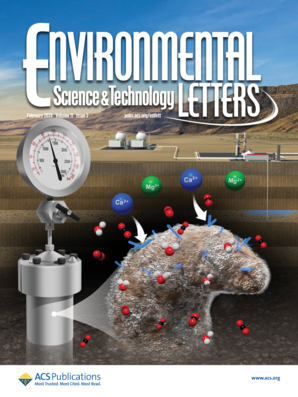总可氧化前体(TOP)测定─PFAS现场调查和补救的最佳实践、能力和限制
IF 8.8
2区 环境科学与生态学
Q1 ENGINEERING, ENVIRONMENTAL
Environmental Science & Technology Letters Environ.
Pub Date : 2023-03-09
DOI:10.1021/acs.estlett.3c00061
引用次数: 7
摘要
全面表征全氟烷基和多氟烷基物质(PFASs)对于有效评估和管理污染场地的风险是必要的。虽然目前的分析方法能够定量测量若干特定的全氟辛烷磺酸,但它们不能提供商业产品中使用并可能释放到环境中的数千种全氟辛烷磺酸的完整情况。这些未测量的PFASs包括许多PFAS前体,它们可能通过氧化转化为相关的PFAS化学物质。总可氧化前体(TOP)测定通过氧化未知的PFAS前体和中间体,并将其转化为稳定的PFASs,从而弥补了这一差距。将TOP测定法应用于pfas污染地点的样品产生了一些新的见解,但它也给实验室带来了各种技术挑战。尽管越来越多的文献研究包括TOP分析,但在学术界研究人员之外,该方法的应用存在一个关键且日益扩大的差距。本文概述了对含水样品使用TOP测定法进行现场评估的好处和挑战,并提出了解决其一些局限性的方法。本文章由计算机程序翻译,如有差异,请以英文原文为准。

Total Oxidizable Precursor (TOP) Assay─Best Practices, Capabilities and Limitations for PFAS Site Investigation and Remediation
The comprehensive characterization of per- and polyfluoroalkyl substances (PFASs) is necessary for the effective assessment and management of risk at contaminated sites. While current analytical methods are capable of quantitatively measuring a number of specific PFASs, they do not provide a complete picture of the thousands of PFASs that are utilized in commercial products and potentially released into the environment. These unmeasured PFASs include many PFAS precursors, which may be converted into related PFAS chemicals through oxidation. The total oxidizable precursor (TOP) assay offers a means of bridging this gap by oxidizing unknown PFAS precursors and intermediates and converting them into stable PFASs with established analytical standards. The application of the TOP assay to samples from PFAS-contaminated sites has generated several new insights, but it has also presented various technical challenges for laboratories. Despite the increased number of literature studies that include the TOP assay, there is a critical and growing gap in the application of this method beyond researchers in academia. This article outlines the benefits and challenges of using the TOP assay with aqueous samples for site assessments and suggests ways to address some of its limitations.
求助全文
通过发布文献求助,成功后即可免费获取论文全文。
去求助
来源期刊

Environmental Science & Technology Letters Environ.
ENGINEERING, ENVIRONMENTALENVIRONMENTAL SC-ENVIRONMENTAL SCIENCES
CiteScore
17.90
自引率
3.70%
发文量
163
期刊介绍:
Environmental Science & Technology Letters serves as an international forum for brief communications on experimental or theoretical results of exceptional timeliness in all aspects of environmental science, both pure and applied. Published as soon as accepted, these communications are summarized in monthly issues. Additionally, the journal features short reviews on emerging topics in environmental science and technology.
 求助内容:
求助内容: 应助结果提醒方式:
应助结果提醒方式:


